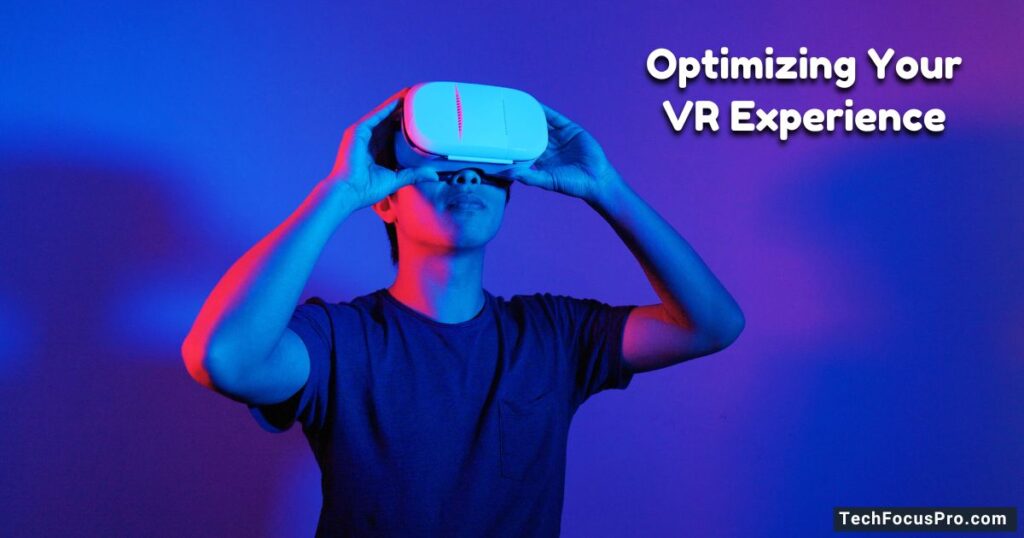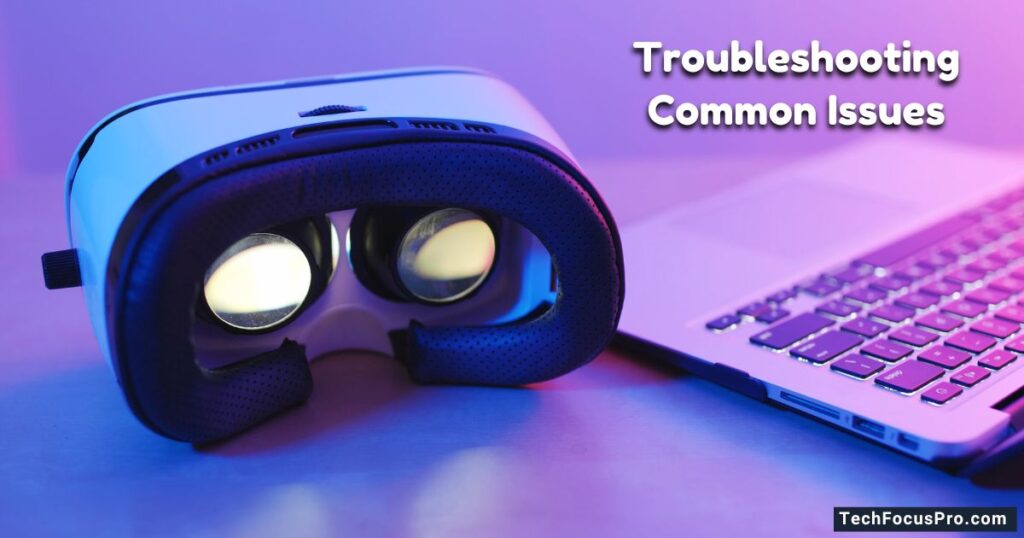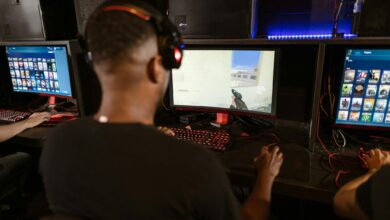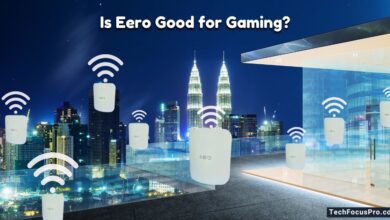How to Set Up Gaming PC for VR?

Virtual Reality (VR) gaming takes your experience to a whole new level by putting you in a digital world you can see and interact with. However, you must have the proper setup to get started with VR gaming.
This guide will walk you through the basics of preparing your gaming PC to handle VR, ensuring you have the proper hardware, software, and settings. Whether you’re new to VR or want to upgrade your PC, this guide will make the process simple and easy to follow.
Gathering the Necessary Components
Setting up your PC for VR gaming requires key components to ensure a smooth and immersive experience. Below, we break this into essential subheadings to guide you through your needs.
1. VR-Ready Graphics Card
A powerful GPU (Graphics Processing Unit) is critical for VR gaming as it handles complex graphics rendering at high frame rates. Look for GPUs labeled “VR-Ready” from major brands like NVIDIA or AMD.
Models like the NVIDIA GeForce RTX 3060 or AMD Radeon RX 6700 XT are baseline choices for smooth VR performance.
2. Compatible Processor (CPU)
The CPU serves as your system’s brain and directly impacts how well your PC processes VR applications. For most VR headsets, you’ll need at least a quad-core processor, such as an Intel Core i5 or AMD Ryzen 5, though higher-end options will provide better performance with demanding games.
3. Sufficient RAM
A minimum of 8 GB of RAM is required for VR, with 16 GB or more ideal for seamless multitasking and future-proofing. This ensures your PC can handle VR applications while running other background processes without lag.
4. VR Headset
Choosing the right VR headset is crucial. Popular options include the Meta Quest series, Valve Index, or HTC Vive. To avoid compatibility issues, ensure the headset is compatible with your PC and its specifications.
5. Adequate Storage Space
VR games and software can take up considerable storage space. To reduce load times and provide efficient performance, it’s recommended to have at least 256 GB of free storage, preferably on a fast SSD.
6. Input Devices and Controllers
Most VR headsets come with controllers designed for immersive navigation. However, some games may require additional accessories, such as gaming keyboards, mice, or even custom VR gloves, for enhanced interaction.
7. Ports and Cables
Ensure your PC has the necessary ports for connecting the VR headset, such as HDMI, USB-A, or USB-C. Verify the length and compatibility of cables with the headset to avoid connectivity interruptions.
8. Ergonomic Setup Essentials
Comfort is essential for prolonged VR sessions. To ensure an optimal gaming experience, invest in a sturdy adjustable chair, cable management systems, and a spacious play area.
Gathering these components will equip you to start your VR gaming adventure. Double-check compatibility requirements for your chosen VR system to ensure a hassle-free setup.
Preparing the Gaming PC

Hardware Requirements
Before setting up your gaming PC for VR, ensure it meets the minimum hardware requirements specified by your VR headset manufacturer.
Key components to focus on include a powerful processor, a high-performance graphics card, ample RAM (at least 16 GB is recommended), and sufficient storage space for VR games and software.
Updating Drivers
Update your graphics card drivers and other essential drivers, such as motherboard or USB drivers, to ensure optimal performance.
Manufacturers like NVIDIA and AMD regularly release updates designed to enhance compatibility and performance for VR applications.
Installing VR Software
Download and install the required VR software or platform associated with your headset, such as Oculus software for Meta headsets or SteamVR for compatible devices. Then, follow the software’s setup instructions to pair your headset with your gaming PC.
Optimizing System Settings
Adjust your PC’s system settings for the best VR experience. Close unnecessary background applications to free up system resources and ensure your power settings prioritize performance over energy savings. Additionally, turn off screensavers or sleep modes that might disrupt your gameplay.
Cable Management
Organize your cables to avoid tangling and to maintain a clean setup. Use cable management clips, ties, or sleeves to bundle cords neatly. This enhances usability and prevents accidents when moving during immersive gameplay.
Setting Up the VR Headset

Properly setting up your VR headset is essential for an optimal virtual reality experience. Start by ensuring your play area is clear of obstacles to prevent accidents. For room-scale VR, a recommended play space should be at least 6.5 x 6.5 feet (2 x 2 meters).
Install any base stations or sensors with your VR system, positioning them at elevated and stable locations for maximum tracking coverage.
Next, connect your headset to your PC or console as the manufacturer instructs, ensuring all cables are securely plugged in. Download and install the software or drivers required for your specific headset to function correctly.
Once connected, calibrate the headset by adjusting the lenses to match your interpupillary distance (IPD) for precise and comfortable visuals.
Finally, adjust the fit of the headset on your head using the straps and ensure it’s snug but not too tight. This will enhance both comfort and tracking accuracy during use. Remember, a well-fitted headset is key to preventing discomfort during longer sessions.
Checklist for Setting Up the VR Headset:
- Clear your play area of obstacles.
- Set up base stations or sensors at elevated positions for tracking.
- Connect the headset to your PC or console.
- Install the required software or drivers for your headset.
- Calibrate the lens for your interpupillary distance (IPD).
- Fit the headset securely and adjust the straps for comfort.
Optimizing Your VR Experience

Adjusting Graphics Settings
Make sure your graphics settings are correctly configured to get the most out of your VR experience. High-performance VR requires a computer or console that can handle the demands of the headset.
Additionally, lower the settings slightly if you notice lag or motion stuttering, as smooth performance is vital for immersion and comfort.
Ensuring Proper Tracking
Proper tracking is essential for accurate movement in VR. Position your base stations or sensors so that they have an unobstructed view of your play area.
If your controllers or headset seem to lose track, ensure no reflective surfaces or objects are blocking the sensors.
Maintaining Your Equipment
Keep your VR headset and controllers clean and in good condition. Wipe the lenses with a microfiber cloth, and store the headset somewhere safe when not in use. Charge your controllers regularly and check cables for wear and tear.
Comfort and Fit
Comfort is a key aspect of optimizing VR. Adjust the headset straps until it feels secure but not tight. Ensure the weight is evenly distributed, and use any included padding for added support if needed. If you wear the headset for an extended period, take breaks to avoid discomfort.
Immersive Sound Setup
Audio plays a significant role in VR experiences. For immersive 3D sound, use headphones or the built-in speakers on the VR headset.
Adjust the volume to a comfortable level that doesn’t overpower or undercut the experience. If your headset supports spatial audio, it can greatly enhance realism.
Regularly Update Software
Make sure your headset firmware and VR apps are updated regularly. Developers often roll out updates to enhance performance, fix bugs, and introduce new features. Keeping your software updated ensures you get the best VR experience possible.
Customize Your Play Area
Create a comfortable and spacious play area where you can move freely without the risk of bumping into furniture or walls.
Use a rug or mat as a boundary marker to help orient yourself in your space. Many VR systems also allow you to set virtual boundaries to keep you safe during gameplay.
Following these steps can make your VR experience smoother, more immersive, and more enjoyable.
Troubleshooting Common Issues

Even with the best setup, you may encounter issues using your VR system. Understanding and resolving these problems quickly can help you get back to enjoying your immersive experience. Here are some common issues and their potential solutions:
- Display Not Turning On: Ensure all cables are securely connected and the device is powered correctly. Also, check that your computer or console meets the required performance specifications. Restarting the system may also help.
- Tracking Problems: Ensure the sensors or cameras are correctly positioned and unobstructed. Clean any dirt or smudges from tracking devices or lenses. Additionally, ensure the play area is well-lit but without excessive reflective surfaces.
- Controller Connectivity Issues: Reconnect or re-pair your controllers with the VR system. Check if they need a battery replacement or recharge, and ensure they’re within the sensors’ range.
- Blurry Display: Adjust the headset’s fit and use the interpupillary distance (IPD) slider to ensure optimal eye clarity. Clean the lenses with a microfiber cloth to remove smudges or debris.
- Overheating: After extended use, give your VR system and connected devices time to cool down. Ensure proper ventilation in the room and avoid placing electronics near heat sources.
By addressing these common issues, you can ensure a smooth and enjoyable VR experience with minimal interruptions.
Read More: What is New in Gaming Technology JogameTech?
FAQs
What PC configuration is needed for VR gaming?
To guarantee a seamless VR experience, your PC must have a minimum of an Intel i5 or AMD Ryzen 5 processor, a high-performance GPU like the NVIDIA GTX 1660 or better, 8GB of RAM or more, and USB 3.0 ports. Having a compatible operating system, such as Windows 10 or later, is also crucial.
Do I need unique accessories to set up VR on my gaming PC?
Depending on your VR system, you’ll also need a compatible graphics card, a big, clear play area for room-scale VR, and sensors or base stations alongside a VR headset. Ensure your VR kit has all the cords and adapters you’ll need.
How do I connect my VR headset to my gaming PC?
Typically, VR headsets connect via HDMI/DisplayPort and USB ports. Follow the manufacturer’s instructions to properly attach the cables and complete the setup using the VR platform’s software, such as SteamVR or Oculus.
What settings should I adjust for the best VR gaming experience?
For a seamless experience, adjust the display settings to match your VR headset’s resolution and refresh rate. Instead of ultra-high visuals, optimize the in-game graphics settings for performance. Ensure there are no obstacles in your play space, and turn on any safety measures, such as chaperone borders.
How do I troubleshoot performance issues while gaming in VR?
Try reducing your graphics settings, updating your graphics drivers, or shutting down any background apps that aren’t necessary if you’re experiencing lag or stuttering.
For an outstanding user experience, make sure your PC satisfies the suggested hardware requirements.
Conclusion
To get the finest VR experience, paying close attention to hardware and software settings while configuring a gaming PC is essential. Ensuring your computer meets or exceeds the suggested system requirements, fine-tuning performance settings, and correctly connecting your VR headset are all crucial steps. Furthermore, you may significantly improve your VR sessions by maintaining your equipment and handling any problems as soon as they arise. With the correct setup, you may fully immerse yourself in the virtual environment and experience flawless gameplay like never before.






